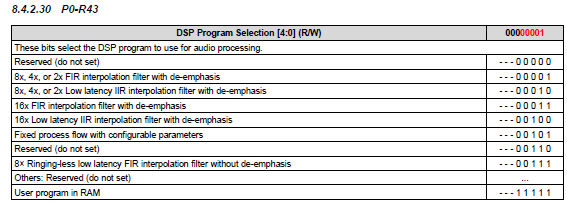We have a board with a TAS5757M hooked up to our processor through I2C.
We are trying to download a Hybrid Flow file dumped from PurePath Console.
Monitoring the I2C traffic with an I2C analyzer, we can see all the data go across, and the chip is ACKing at the proper time.
We can read back register values, such as A & B volume, and they contain the values sent over.
We can vary the values in registers 0x3D and 0x3E for volume A & B, and read back the data correctly, but the audio level never changes.
We are using the .h file dumped from PurePath Console without any changes, just including it in our project.
Any help would be greatly appreciated.


